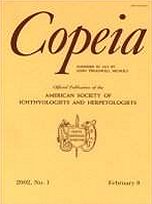This research examined the onset, duration, and termination of hibernation in Desert Tortoises (Gopherus agassizii) over several years at multiple sites in the northeastern part of their geographic range, and recorded the temperatures experienced by tortoises during winter hibernation. The timing of hibernation by Desert Tortoises differed among sites and years. Environmental cues acting over the short-term did not appear to influence the timing of the hibernation period. Different individual tortoises entered hibernation over as many as 44 days in the fall and emerged from hibernation over as many as 49 days in the spring. This range of variation in the timing of hibernation indicates a weak influence at best of exogenous cues hypothesized to trigger and terminate hibernation. There do appear to be regional trends in hibernation behavior as hibernation tended to begin earlier and continue longer at sites that were higher in elevation and generally cooler. The emergence date was generally more similar among study sites than the date of onset. While the climate and the subsequent timing of hibernation differed among sites, the average temperatures experienced by tortoises while hibernating differed by only about five degrees from the coldest site to the warmest site.
How to translate text using browser tools
1 May 2007
Desert Tortoise Hibernation: Temperatures, Timing, and Environment
Kenneth E. Nussear,
Todd C. Esque,
Dustin F. Haines,
C. Richard Tracy
ACCESS THE FULL ARTICLE





